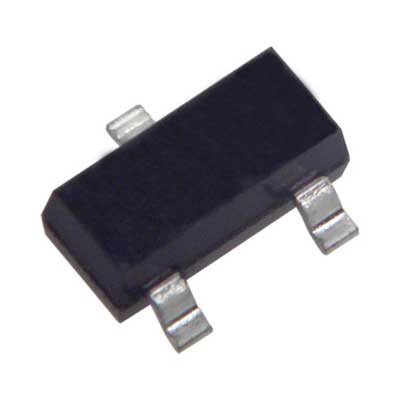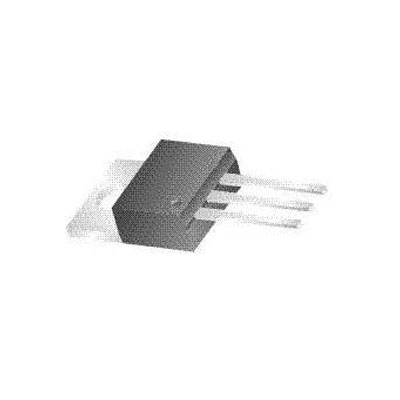Monolithic ceramic capacitors are widely used electronic components that play a crucial role in various electrical circuits and systems. With their compact size, high capacitance values, and excellent electrical characteristics, monolithic ceramic capacitors have become a staple in modern electronics.
In this article, we will delve into the structure, characteristics, and applications of monolithic ceramic capacitors. Let’s explore it.
A monolithic ceramic capacitor is a type of capacitor that is widely used in electronic circuits for its compact size and high capacitance values. It belongs to the family of ceramic capacitors, which are made of a ceramic material as the dielectric.
The term "monolithic" refers to the construction of the capacitor, where the entire capacitor structure is formed as a single piece or monolith. The capacitor consists of alternating layers of ceramic material and metal electrodes, which are stacked together and then fired at high temperatures to create a solid and stable component.
The material structure of monolithic ceramic capacitor (monolithic ceramic capacitor) includes the following main components:
Ceramic material layer: The ceramic material is the core component of monolithic ceramic capacitors. Usually, barium titanate or similar ceramic materials are used. These ceramic materials have good dielectric properties and are capable of storing and releasing electrical energy efficiently. The ceramic materials come in the form of sheets or layers that are stacked together to form the structure of a capacitor.
Metal electrodes: The layers of ceramic materials are sandwiched between metal electrodes. The commonly used metal electrode materials are silver or silver-based alloys. These metal electrodes are printed on the surface of the ceramic material layers in the form of thin sheets. The electrodes are laminated in an alternating sequence to ensure proper electrical connections.
Internal electrode connection: The metal electrodes of the ceramic material layers are connected together by means of an internal electrode connection. The internal electrode connections are located on the side of the capacitor and they are connected to the metal electrodes by metallization or soldering, etc., to form the internal circuit of the capacitor.
External electrode connection: The external electrode connection of a capacitor is made by leading the metal electrode or internal electrode connection to the outside of the capacitor. This can be soldered leads, pads or other connections in order to connect the capacitor to the external circuit.
External Coating: To protect the capacitor from environmental influences and mechanical damage, an external coating is often applied to the surface of the capacitor. This is usually an insulating layer of material, such as epoxy or polymer, that provides mechanical stability and protection of the capacitor.
In general, the material structure of a monolithic ceramic capacitor is a multilayer structure consisting of layers of ceramic material and metal electrodes, connected by internal and external electrodes to form a single unit, and an external coating for protection and insulation. This structure allows monolithic ceramic capacitors to have high capacitance and compact size for various electronic circuit applications.
Here are some key characteristics of monolithic ceramic capacitors:
High Capacitance: Monolithic ceramic capacitors offer high capacitance values relative to their size. They can provide a significant amount of capacitance in a compact package, making them space-efficient for electronic circuit designs.
Small Size: These capacitors are known for their small physical footprint. They are available in various package sizes, allowing for easy integration into tight spaces on printed circuit boards (PCBs) or within electronic devices where size constraints are critical.
Wide Capacitance Range: Monolithic ceramic capacitors are available in a broad range of capacitance values, spanning from picofarads (pF) to microfarads (µF). This wide range enables their use in a wide range of applications, from high-frequency circuits to power supply filtering.
Non-Polarity: Monolithic ceramic capacitors are non-polar devices, meaning they can be connected to a circuit without concern for the polarity of the applied voltage. This simplifies circuit design and assembly.
Low ESR and ESL: Monolithic ceramic capacitors exhibit low equivalent series resistance (ESR) and equivalent series inductance (ESL). Low ESR ensures efficient energy storage and discharge, while low ESL minimizes the impact of inductive effects in high-frequency applications.
Fast Charging and Discharging: Due to their low ESR and ESL, monolithic ceramic capacitors can charge and discharge quickly. This characteristic makes them suitable for applications requiring rapid energy transfer or high-frequency operation.
Good Frequency Response: Monolithic ceramic capacitors have excellent frequency response characteristics. They can maintain their capacitance and performance across a wide frequency range, making them suitable for applications involving AC signals or high-frequency circuits.
Temperature Stability: These capacitors generally offer good temperature stability, allowing them to maintain their electrical properties over a wide temperature range. However, it's essential to consider the specific capacitor series and manufacturer's specifications for precise temperature ratings.
Power Supply Decoupling:
Application: Decoupling capacitors in power supply circuits.
Example Model: Murata GRM series (e.g., GRM32ER71H475KA88). Search more chips at Veswin Store>>
Filtering:
Application: Filtering out noise and ripple in power supplies or signal lines.
Example Model: TDK C3216X7R1H105K160AB.
Timing and Oscillator Circuits:
Application: Timing circuits and crystal oscillators.
Example Model: AVX SR305E105MARTR1.
Coupling and DC Blocking:
Application: Coupling AC signals and blocking DC components.
Example Model: Samsung CL21B104KBCNNNC.
Tuning and Matching Networks:
Application: RF tuning and impedance matching.
Example Model: Kemet C0402C103K4RACTU.
EMI/RFI Suppression:
Application: Suppression of electromagnetic and radio frequency interference.
Example Model: Murata NFM18PC105B0J3D.
Snubber Circuits:
Application: Snubber circuits for voltage spike protection.
Example Model: Vishay CRCW08050000Z0EA.
Motor Start and Run Capacitors:
Application: Start and run capacitors for electric motors.
Example Model: Panasonic ECQ-E2684KF.
Consumer Electronics:
Application: Various consumer electronic devices.
Example Model: Taiyo Yuden LMK107BBJ475KA-T.
Automotive Electronics:
Application: Automotive electronics subjected to harsh conditions.
Example Model: TDK CGA2B2C0G1H101J080BA.
Here are the manufacturers of monolithic ceramic capacitor,
Manufacturer | Differences | Advantages | Disadvantages | Representative Chip Series |
Murata Manufacturing Co., Ltd. | Global leader in ceramic capacitor manufacturing, wide product line, diverse model selection, high reliability and innovation | High quality and reliability, wide product selection, technological innovation, leading manufacturing processes and R&D capabilities | Higher prices, certain models may have longer lead times | GRM, GCM, GRF, GRP, GJM, GJF, GRJ, GNM, GRC, GRV, GRT |
TDK Corporation | Global leader in electronic components manufacturing, rich technical expertise, wide product portfolio | High quality and reliability, wide product portfolio, technological innovation and R&D capabilities, global production and sales network | Higher prices for specific models | C3216, C1608, C2012, C1005, C3225, C1608, C4532, C5750 |
Taiyo Yuden Co., Ltd. | Well-established manufacturer with a good reputation in the electronic component market, focus on technological innovation and quality assurance | High quality and reliability, technological innovation, wide product line, excellent R&D capabilities, compliance with environmental standards | Higher prices for specific models | LMK, UMK, EMK, JMK, PMK, TMK, FMK, TFMK, CMK, KMK |
Samsung Electro-Mechanics Co., Ltd. | Prominent electronic component manufacturer in South Korea, significant global market share, advanced manufacturing technology, diverse product portfolio | Diverse product portfolio, advanced manufacturing technology, good quality and reliability, global sales network | Limited availability for certain models in some regions | CL, CLC, CLS, CLV, CLX, CLE, CL31, CL10, CL21, CL05 |
AVX Corporation | Global leader in electronic component manufacturing, offering high-performance ceramic capacitors and other electronic components | High quality and reliability, wide product line, technological innovation and R&D capabilities, flexible solution support | Higher prices for specific models | SR, SA, SC, SM, SK, SQ, SCF, SCC, SCU, SQP, SRP, SMD, SF, SV |
Kemet Corporation | Global leader in electronic component manufacturing, focused on high-performance ceramic capacitors and inductors, emphasis on sustainability and environmental friendliness | High quality and reliability, wide product line, technological innovation and R&D capabilities, strong environmental awareness | Higher prices for specific models | C0603, C0805, C1206, C1210, C2220, C3330, C4532, C5750 |
Vishay Intertechnology, Inc. | Diversified electronic component manufacturer, offering various types of capacitors | Wide product portfolio, technological innovation, strong market presence, global sales network | Higher prices for specific models | VJ, VY, VY1, VJ2, VJ3, VJ4, VJ5, VJ6, VJ7, VJ8, VJ9, VJ10, VJ11, VJ12, VJ13, VJ14, VJ15, VJ16, VJ17, VJ18, VJ19 |
In conclusion, monolithic ceramic capacitors are indispensable components in the world of electronics, offering compact size, high capacitance values, and excellent electrical characteristics. Their versatile nature makes them suitable for a wide range of applications, from filtering and decoupling to timing and energy storage.
By understanding the structure, characteristics, and applications of monolithic ceramic capacitors, you can leverage their benefits and optimize your electronic designs. Stay updated with the latest advancements, explore datasheets and application notes, and make informed choices when selecting monolithic ceramic capacitors for your projects. With their reliable performance and broad availability, monolithic ceramic capacitors are sure to enhance the functionality and efficiency of your electronic circuits and systems.
Hot News









